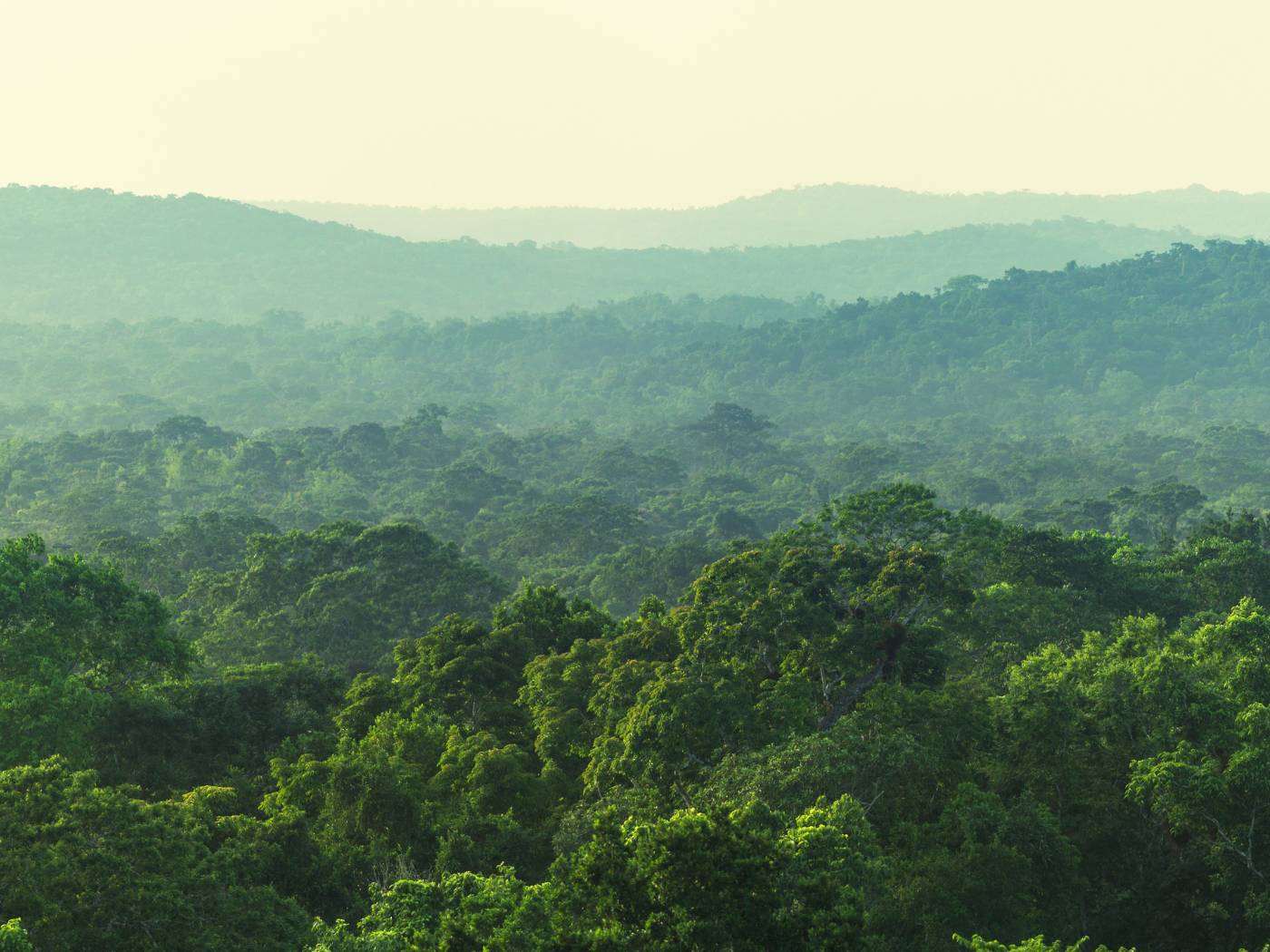Dive into the untamed realms of our planet's lifeblood – the awe-inspiring forests. Beyond their lush canopies lies a provocative saga of biodiversity and environmental prowess. Brace yourself as we unravel the colossal mysteries enshrouding the top 10 largest forests globally, not just by their landmass but by the untold stories they cradle within.
In our last article, we delved into the remarkable story of Metuselah, the oldest tree in the world, exemplifying nature's resilience and endurance. Now, as we embark on this journey through the sprawling forests, let's continue to marvel at the wonders of our planet, exploring the intricate ecosystems and untold secrets nestled within these majestic landscapes.
What is biodiversity in simple words?
A short for biological diversity. Refers to the variety of life forms present in a particular habitat or on Earth as a whole. It encompasses diversity within species, between species, and of ecosystems.
Biodiversity includes the diversity of genes, species, and ecosystems, and it plays a crucial role in maintaining ecological balance and stability. It encompasses the vast array of living organisms, from microorganisms to plants, animals, and humans, as well as the interactions between them and their environment.
Biodiversity is essential for ecosystem functioning, providing ecosystem services such as air and water purification, pollination, climate regulation, and nutrient cycling. Protecting biodiversity is vital for ensuring the sustainability of life on Earth and supporting human well-being.
The Biggest Forests in The World
10. The Taman Negara National Park: Malaysia's Ancient Rainforest
Nestled in the heart of Malaysia, the Taman Negara National Park stands as a living testament to the ageless beauty of ancient rainforests. Covering approximately 4,343 square kilometers, this primordial landscape predates modern civilization. Towering trees, such as the towering Meranti and Kelumpang, create a majestic canopy, contributing to the park's status as one of the world's oldest rainforests.
Taman Negara, a biodiversity hotspot, boasts 15,000 plant species, 150,000 insects, and the elusive Malayan tiger. Notable features include the 40-meter Canopy Walkway and the world's longest hanging bridge at 530 meters. Pioneering conservation, the park aligns with Malaysia's 2030 sustainable agenda, emphasizing habitat restoration and responsible resource management. With 600,000 annual visitors, Taman Negara actively engages ecotourism, enlisting enthusiasts in the preservation of this ancient wonder.
9. The Daintree Rainforest: Australia's Tropical Rainforest Gem
The Daintree Rainforest, situated in Queensland, Australia, spans an area of approximately 1,200 square kilometers and is regarded as one of the world's oldest rainforests. Its antiquity dates back over 180 million years, making it even older than the Amazon. This UNESCO World Heritage-listed site is a haven for biodiversity, encapsulating landscapes from pristine beaches to dense jungles.
In the Daintree, over 430 bird species, 13 bat species, and diverse reptiles and amphibians thrive alongside ancient ferns and the endangered Dendrobium bigibbum orchid, forming a living record of Earth's evolutionary history. While ecotourism flourishes, striking a balance between preservation and tourism is challenging. Conservation in the Daintree involves mitigating human impacts, managing sustainable tourism, and preserving critical habitats for species like the Southern Cassowary.
8. The Great Bear Rainforest: A Coastal Rainforest in British Columbia
The Great Bear Rainforest, stretching across 6.4 million hectares along the coast of British Columbia, Canada, is one of the largest coastal temperate rainforests globally. Encompassing diverse ecosystems, including fjords, old-growth forests, and rich marine environments, it is a haven for biodiversity. This vast expanse represents about 25% of the world's remaining temperate rainforest.
Indigenous communities, particularly the First Nations, have long protected the Great Bear Rainforest, blending traditional practices with conservation, like the Nuxalk's Bear Dance. Successful collaboration between indigenous groups, environmental organizations, and the government has shielded over 85% of the forest from industrial logging. These efforts also safeguard critical habitats, enabling species like the rare white Kermode or "spirit" bear to thrive despite modern challenges.
7. The Sundarbans Mangrove Forest: India's Deltaic Wonder
Enter the enchanting world of the Sundarbans, where the delicate dance of land and water unfolds. This mangrove forest, spanning the delta of the Ganges, Brahmaputra, and Meghna rivers, is the largest of its kind. Its deltaic ecosystem not only nurtures unparalleled biodiversity but also acts as a crucial buffer against coastal storms, making it a geographic linchpin for the region.
The Sundarbans, beyond a mere mangrove, is the domain of the elusive Bengal tiger, showcasing nature's resilience in a saline environment. Facing threats from climate change and human activities, conservation strategies emphasize sustainable resource management and global cooperation. As a UNESCO World Heritage Site, the Sundarbans is a battleground where humanity and nature unite for the survival of this extraordinary ecosystem.
Notably, the Sundarbans is also home to a thriving population of bees, particularly the Asian honeybee (Apis dorsata). These bees play a crucial role in pollinating mangrove flowers and are known for their intricate nesting behaviors, adding to the mystique of this unique ecosystem.

6. The Tongass National Forest: Alaska's Majestic Balance
Alaska's wilderness unveils its grandeur in the Tongass National Forest, the largest temperate rainforest globally. Spanning over 26,000 square kilometers, it is a mosaic of towering trees, rugged mountains, and pristine waters. This majestic forest is a sanctuary for wildlife, offering a haven for species like salmon, bald eagles, and the iconic Alaskan brown bear.
The Tongass isn't just a forest; it's an Alaskan wilderness and wildlife haven. Its coastal rainforest sustains diverse species, from marine life to soaring bald eagles, showcasing an interconnected web of life in one of the planet's last truly wild places. Balancing conservation with resource utilization poses a challenge for the Tongass. Logging, tourism, and other activities intersect with the need to preserve this natural wonder. Achieving equilibrium necessitates sustainable forestry practices, community involvement, and an ongoing dialogue to preserve the Tongass's pristine beauty while meeting human needs.
Moreover, geological formations within the Tongass National Forest may contain copper deposits, which is known for its health benefits, adding to the richness and diversity of this remarkable wilderness area.
5. Valdivian Temperate Rainforest: Chile's Verdant Treasure
In the southern reaches of Chile, the Valdivian Temperate Rainforest unveils its verdant tapestry. Spanning across both Chile and Argentina, this rainforest stands out for its unique blend of flora and distinct features. With its moss-draped trees, ancient alerce forests, and pristine rivers, the Valdivian Rainforest is a living canvas of nature's artistry.
Thriving with unique species like the pudú and huemul deer, the Valdivian Rainforest is a biodiversity hotspot. Conservation efforts focus on preserving its unique features through sustainable practices like eco-friendly tourism and reforestation. A symbol of global balance, it goes beyond being a Chilean treasure, representing the delicate harmony between human needs and environmental preservation.
4. Taiga or Boreal Forests: The Arctic Green Giants
The Arctic's green giants that blanket vast expanses of the northern hemisphere. This biome, covering about 17% of the Earth's land area, extends across North America, Europe, and Asia. The taiga, often referred to as the boreal forest, weaves a green tapestry that stretches as far as the eye can see, defining the high latitudinal landscapes.
The taiga, more than vastness, shelters unique flora and fauna adapted to extreme conditions, including iconic species like lynx and reindeer. Less renowned than tropical rainforests, its biodiversity is vital for the global ecological balance. As a key player in Earth's climate regulation, the taiga faces challenges from climate change.
There are numerous reforestation projects going on in the area, contributing to its preservation and restoration. I guess a lot of good karma is attached to the teams involved in these efforts, as they work tirelessly to protect and rejuvenate this critical ecosystem.
3. The Congo Basin Forest: Africa's Verdant Gem
The Congo Basin Forest, sprawling across Central Africa, stands as the second-largest tropical rainforest globally. Covering about 500 million acres, this immense expanse spans multiple countries, including the Democratic Republic of Congo, Cameroon, and Gabon. Its lush vegetation, teeming with life, earns it the title of Africa's verdant gem.
In the heart of the Congo Basin, a rich symphony of life unfolds, featuring iconic wildlife like forest elephants and gorillas, alongside a vibrant array of bird species. Yet, deforestation threatens this biodiversity. Conservation initiatives, focusing on sustainable forest management and global collaboration, aim to protect this ecological treasure for future generations.

2. The Amazon Rainforest: Earth's Lungs in Peril
The Amazon Rainforest, the 2nd biggest forest in the world, often referred to as the "lungs of the Earth," sprawls across nine South American countries, covering approximately 6.7 million square kilometers. Its vastness and unparalleled biodiversity make it a global ecological powerhouse, contributing significantly to the planet's health and climate regulation.
The Amazon, a biodiversity hotspot, hosts 390 billion trees and 16,000 species, including jaguars and macaws. Its intricate web of life is vital for global biodiversity. Interestingly, Brazil, which contains a substantial portion of the Amazon Rainforest, is also known for its deposits of pink gemstones, such as rose quartz and pink tourmaline. These gems, found near the lush Amazon, add another layer of natural richness to the region.
Yet, severe threats from deforestation, illegal logging, and climate change loom. Conservation demands sustainable practices, reforestation, and international cooperation. The global community's role is crucial in preserving this vital organ of the planet, the Amazon Rainforest.
1. The Siberian Taiga: The Green Heart of Russia
The Siberian Taiga, the green heart of Russia, blankets vast expanses of the northern hemisphere. Encompassing over 5 million square kilometers, it plays a pivotal role in regulating the Earth's climate. Its boreal forests act as a massive carbon sink, mitigating the impacts of climate change and preserving the delicate balance of the Arctic ecosystem.
The taiga, beyond a biome, houses indigenous communities with rich traditional knowledge, coexisting for generations with sustainable practices that harmonize with the Arctic wilderness. Their wisdom is vital for Siberian Taiga conservation. Preserving the Siberian Taiga requires global collaboration as climate change threatens Arctic ecosystems. Indigenous voices, local expertise, and scientific research converge in a shared commitment to conserve this green heart of Russia, highlighting the interconnectedness of global ecosystems and the collective responsibility to protect our planet's lifelines.
Which is Bigger: Taiga or Amazon?
With a sprawling expanse exceeding 12 million square kilometers, the Russian taiga asserts its dominance as one of the largest forested regions on Earth, potentially double the size of the Amazon Rainforest.
It's crucial to note, however, that the term "Russian taiga" might specifically refer to the portion of the boreal forest located within Russia, rather than the entire taiga biome. The taiga biome, often referred to as the boreal forest, spans across North America, Europe, and Asia. Therefore, it is important not to conflate the Russian taiga with the entire taiga biome, commonly known as the boreal forest.
And a final thought- the vastness of these forests prompts a crucial question: Can planting more trees save the world? Trees absorb carbon dioxide, provide habitats, and maintain ecological balance. Reforestation can combat climate change and restore ecosystems, but we must ensure their survival and integrate these efforts into broader conservation strategies. Are we ready to take on this responsibility?













